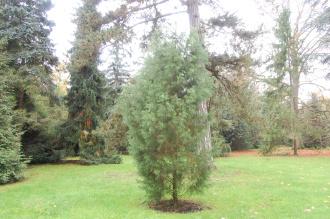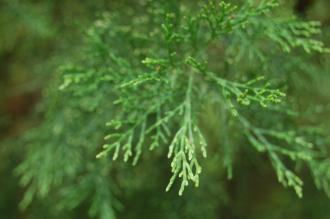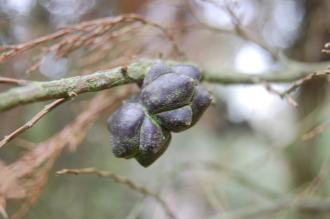
Callitris rhomboidea (08/11/2015, Kew Gardens, London)
Position: Full sun to light shade
Flowering period: Spring
Soil: Moist, well drained
Eventual Height: 15m
Eventual Spread: 5m
Hardiness: 8b, 9a, 9b, 10a, 10b, 11
Family: Cupressaceae
Callitris rhomboidea is a fast growing tree with an upright habit. Its light green/ glaucus leaves are up to 3mm long and appear as slender prays. Its trunk may achieve a diameter of up to 40cm. This tree is monoecious with its flowers appear at the tips of fruiting branches. Its fruit is a globose cone and up to 2cm across.

Callitris rhomboidea Leaf (08/11/2015, Kew Gardens, London)
Callitris rhomboidea, commonly known as Oyster Bay Pine, Port Jackson Pine or Tasmania Cypress Pine, is native to south east Australia. In its native habitat it grows in open woodland.
The etymological root of the binomial name Callitris is derived from the Greek kali meaning ‘beautiful’ and treis meaning ‘three’. Rhomboidea is derived from the Latin rhombi meaning ‘turbot (the fish)’, which is rhombus shaped.

Callitris rhomboidea Fruit (08/11/2015, Kew Gardens, London)
The landscape architect may find Callitris rhomboidea useful as an attractive upright conifer suitable for poor soils.
Ecologically, Callitris rhomboidea is of little value in the UK.
Callitris rhomboidea prefers moist, fertile, well-drained soils. It tolerates most pH of soil. It is tolerant of poor soils.
Callitris rhomboidea requires little maintenance.

Landscape Architecture

